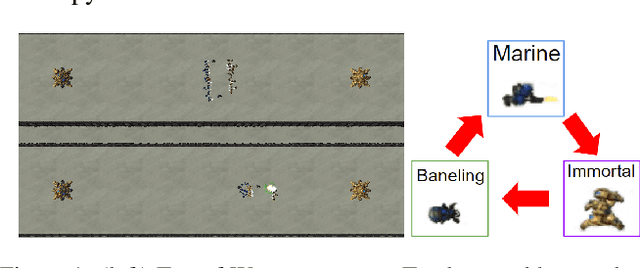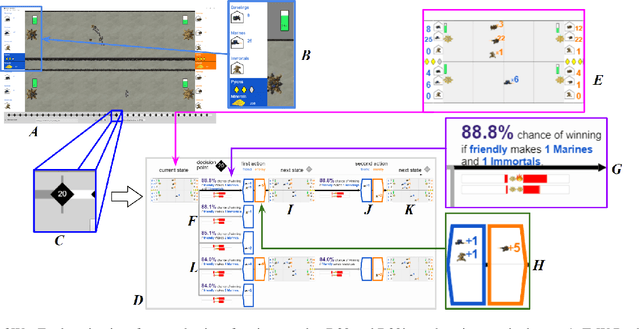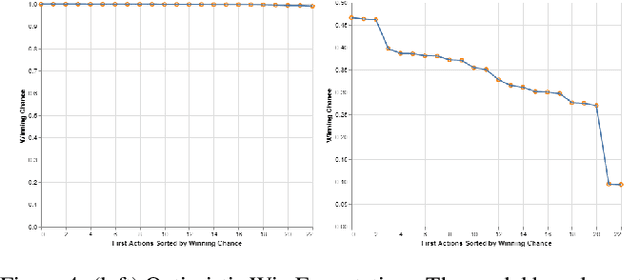Zhengxian Lin
Identifying Reasoning Flaws in Planning-Based RL Using Tree Explanations
Sep 28, 2021



Abstract:Enabling humans to identify potential flaws in an agent's decision making is an important Explainable AI application. We consider identifying such flaws in a planning-based deep reinforcement learning (RL) agent for a complex real-time strategy game. In particular, the agent makes decisions via tree search using a learned model and evaluation function over interpretable states and actions. This gives the potential for humans to identify flaws at the level of reasoning steps in the tree, even if the entire reasoning process is too complex to understand. However, it is unclear whether humans will be able to identify such flaws due to the size and complexity of trees. We describe a user interface and case study, where a small group of AI experts and developers attempt to identify reasoning flaws due to inaccurate agent learning. Overall, the interface allowed the group to identify a number of significant flaws of varying types, demonstrating the promise of this approach.
Contrastive Explanations for Reinforcement Learning via Embedded Self Predictions
Oct 11, 2020



Abstract:We investigate a deep reinforcement learning (RL) architecture that supports explaining why a learned agent prefers one action over another. The key idea is to learn action-values that are directly represented via human-understandable properties of expected futures. This is realized via the embedded self-prediction (ESP)model, which learns said properties in terms of human provided features. Action preferences can then be explained by contrasting the future properties predicted for each action. To address cases where there are a large number of features, we develop a novel method for computing minimal sufficient explanations from anESP. Our case studies in three domains, including a complex strategy game, show that ESP models can be effectively learned and support insightful explanations.
 Add to Chrome
Add to Chrome Add to Firefox
Add to Firefox Add to Edge
Add to Edge